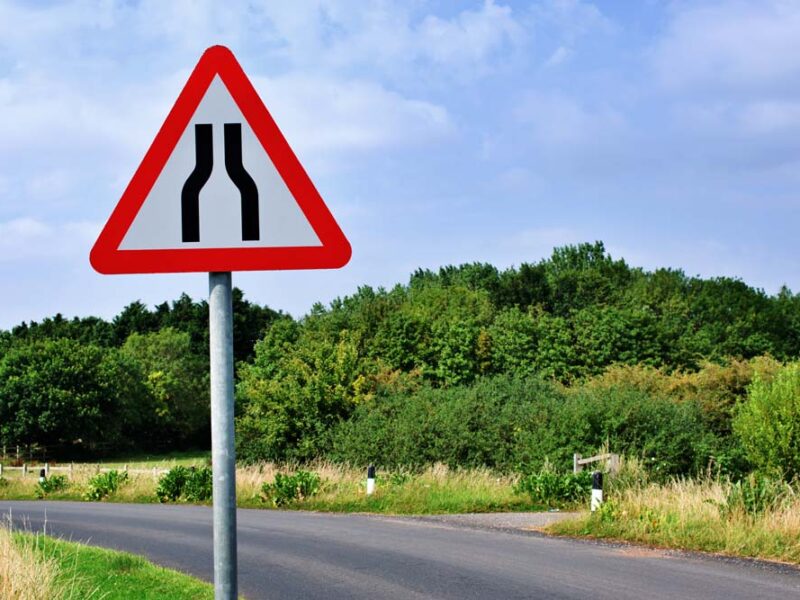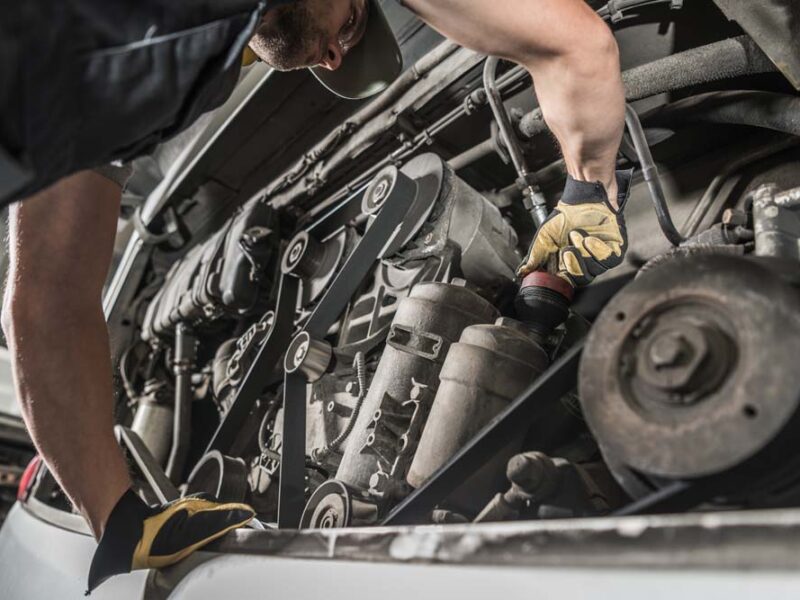Many operators may not always appreciate that annual M.O.T. test failures go against their records – even when it is the maintenance provider that is primarily at fault for failing to prepare a vehicle properly. Richard Pelly looks at an operator’s legal duties in ensuring their vehicles (including hired ones) are safe on the road.
History of the MOT
Born in 1907, Alfred Ernest Marples lived a colourful life, enjoying his final years in his vineyard in France having reportedly fled the UK to avoid a hefty tax bill. That plan was thwarted after his assets were frozen by the UK government but long before his somewhat hasty departure he was the Minister of Transport and, in those, hopefully more sober, times he oversaw the introduction in 1960 of the ‘Ministry of Transport’ test, or ‘M.O.T.’ as it has become colloquially known. As his financial infamy recedes, his legislative transport legacy lives on (single and double yellow line parking restrictions were also implemented under his watch).
Roadworthiness is Key
Operators will know that their vehicles must be submitted for annual test every year when they are being used under an operator’s licence, and that different classes and sizes of PSV require different tests, and operators need to take special care to ensure that they arrange for the correct test preparation for the right test, mindful of the number of passenger seats that the vehicle has and its size. The fastest and most effective way to make sure that no mistakes are made in this area is to liaise directly with the local ATF or DVSA office. Even more fundamentally, vehicles must be safe on the road.
Keeping vehicles roadworthy is an obligation that may not be delegated and road safety (together with fair competition) is a vitally important objective of the road transport regime, so much so that all PSV operators are made subject to an express operator’s licence undertaking to ensure that “vehicles, including hired vehicles, are kept in a fit and serviceable condition”.
Hired Vehicles - Operators Responsibilities
Pausing there, it is worth noting that in the case of hired vehicles, it is the operator and not the hire company that will be responsible for a vehicle used under its operator’s licence, and it will be cold comfort to operators that they may have a claim in negligence and/or for breach of contract if a hire company lets them down and supplies a defective vehicle, which is then involved in an accident caused by the inherent defect(s) with which it was supplied.
Making arrangements for a third party maintenance provider to carry out regular safety inspections, general repair and servicing, and preparing vehicles for M.O.T. can of course be arranged (and must be notified to the Traffic Commissioner), but what operators do not always appreciate is that annual test failures go against their record even when it is the maintenance provider that is primarily at fault for failing to prepare a vehicle properly (and the days when a PSV operator’s record at annual test was ‘off’ the DVSA’s radar are fast receding). Tasks may be delegated; but legal duties may not.
PG14 Annual Test Report
Scrutinising the PG14 annual test report form is absolutely fundamental, so that any ‘PRS’ (pass after rectification at the test station) or failure can be investigated properly and straightaway. Operators should have in place a written policy requiring any M.O.T. failure (even a PRS) to be reported to the nominated transport manager and in the case of a limited company, a report should also be made to at least one of the statutory directors (if not to all members of the Board of Directors) with investigations being properly recorded.
Time and time again one sees cases before Traffic Commissioners where the operator’s case is that it simply did not know that vehicles were failing their M.O.T.s. Those arguments are sometimes dishonest, but even where they are true, the cliché ‘ignorance of the law is no defence’ leaves them without a credible answer, and the concession risks indicating endemic incompetence; not to know whether an operator’s vehicles are passing or failing their annual tests may leave a Traffic Commissioner to wonder whether an operator ever knows if its vehicles are roadworthy, and that is all the more poignant given that the M.O.T. is a ‘minimum standard’.
As operators will also know, M.O.T. failures can adversely affect an operator’s operator compliance risk score, and so lead to regulatory investigation and in serious cases the threat of a call up to Public Inquiry.
The MOT Standard - Back to Basics
The DVSA’s Public Service Vehicle Inspection Manual (consolidated edition 2013) which includes updates in 2014 and 2015 remains a key source for all operators who do their own maintenance in-house. Those operators who outsource their maintenance to third parties should ensure that their maintenance providers also have a copy of the Manual, and written confirmation of this fact should be obtained and filed.
The Manual’s introduction is instructive, and leaves no room for misunderstanding -
"The primary purpose of the Manual is to support DVSA staff in conducting the annual testing of vehicles. Our aim is to provide customers with a consistent testing service with the correct outcome according to the vehicle condition. It will be useful to industry to provide assurance that the serive that is being provided is to the published standard and improve the level of accountability that DVSA has to our customers.
The Manual will also be useful to those responsible for the maintenance of public service vehicles so that they remain well informed on the current minimum legal standards for roadworthiness. Its publicatin and ease of availability demonstrates DVSA's ongoing commitment to improving road safety and environmental protection whilst supporting industry to fulfil its obligations to maintain the roadworthiness of vehicles at all times."
It is self-evident that operators need to make sure that they know what the current minimum standard is, and that they have an effective system in place to make sure that they keep up to date with all relevant changes.
In terms of presenting vehicles for M.O.T. so that wherever possible they pass the test first time with no PRS or failed items, there is no magic wand that one can wave, but there are ways to cut down on the error count.
- First, make sure that the vehicle technicians have the necessary time and the right resources.
- Do not allow those charged with preparing the vehicles what they will no doubt see as the legitimate excuse that they were asked to do the impossible because they were not given enough hours and/or the necessary equipment to do the job properly.
- Insist that the person responsible for preparing the vehicle or the senior engineer responsible for signing it off as being ready for MOT puts their name to their work and confirms personally that the vehicle is ready to be presented for test. Making people directly accountable for their work and taking an interest in what they are doing sounds trite, but it works.
- Make certain that the person who prepares the vehicle for test knows that the operator will review the PG14 test report straightaway (anecdotal experience over many years confirms that engineers who know that test failures are unlikely to be discovered by operators are more likely to cut corners).
If something goes wrong, and a vehicle fails its inspection, investigate immediately in order to determine who, if anyone, is at fault and what, if anything, can be done to avoid similar failures in future (bulbs do blow on the test lane, and the fact of a failure may be no-one’s fault, but a properly recorded investigation is still essential, especially in the case of a serious failure, and even more so in the event of the issue of a prohibition at the time of the test).
First published in I-Croners August 2016

More News and Insight

Changes to Brake Safety Inspections for Commercial Vehicles – April 2025
In April 2025 the brake testing regime guidance will change. Roller Brake Tests, that have been mandatory for years, will be joined by an Electronic Break Performance Monitoring System or EBPMS…

Case Study – Public Inquiry for Gillbard Plant, Autumn 2024
Gillbard Plant was called to Public Inquiry in Autumn 2024. The hearing made headlines in the transport press due to the element of “DVSA Poacher turned Game-keeper” of Gillbard Plant’s Transport Manager, Mr. Anthony Brayley-Willmetts, a former DVSA (VOSA) examiner turned transport consultant…

DVSA Load Security Guidance – Updated December 2024
When carrying loads on lorries every HGV Operator knows how important it is to ensure that goods are secured safely so that they arrive at their destination in good condition and that they do not cause any damage or danger on the UK’s roads during the process of transporting them…

New Rules for Vehicle Operators and Drivers Carrying Out International Journeys
The Department for Transport and the Driver and Vehicle Standards Agency recently issued a bulletin regarding the new rules that vehicle operators and their drivers will have to comply with if travelling on international journeys…

Road Haulage Association Members and DVSA Leadership Work Shadow Each Other!
To help highlight the Road Haulage Association’s “National Lorry Week” which this year was between 4th and 8th November 2024, the Road Haulage Association and the DVSA’s Leadership team decided to spend some time work shadowing each other….

2024 Update to Guide to Maintaining Roadworthiness (GTMR)
The Guide to Maintaining Roadworthiness is the Driver & Vehicle Standard Agency’s (DVSA) standard produced in collaboration with key industry stake holders which explains the responsibilities and systems involved in maintaining vehicles in a roadworthy….

New Driver CPC Reforms to be in Force from 3rd December 2024
Following a very lengthy consultation period on this matter launched in early 2023, Parliament finally debated the “Vehicle Drivers (Certificates of Professional Competence) (Amendment) Regulations 2024” on Tuesday 29th October 2024…

When Sat Nav’s Lead Lorries Astray!
Lorries getting into trouble and causing chaos in the small country roads of Great Britain have been making headlines again. Whilst a lot of this content is amusing and no doubt is a winner with internet audiences there is a very serious side to these incidents…

Traffic Commissioners 2023-2024 Report – the Highlights & the Lowlights of the Year
In early October the Traffic Commissioners of Great Britain published their annual report. The report encompasses the purpose of the individual Traffic Commissioners who are independent regulators for the goods vehicle and public service vehicle industries and their professional drivers…

Vehicle Maintenance Data Collected by the DVSA
In a recent ‘blog’ by the DVSA’s Danny Charles the amount and type of data that the DVSA collects was discussed. Some may find it surprising how much data the DVSA holds and makes available to the general public on individual transport businesses…

Murky Mini-Bus Waters in UK?
There has been reports in the industry news concerning the number of illegal operators of mini bus services who are operating un-hindered by the regulatory enforcement agencies…

Driver CPC – Changes Coming in 2024 and 2025
The Driver Certificate of Professional Competence (DCPC) was introduced in the UK in 2007, as specified in EU Directive 2003/59/EC for all commercial drivers…
